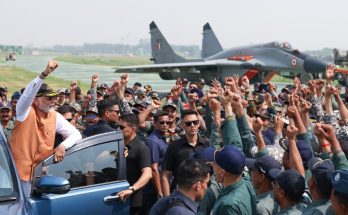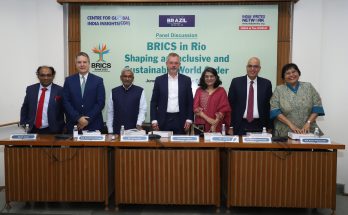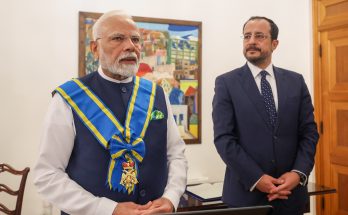
NEW DELHI: Taking a leap of faith, India and the US, the world’s oldest and largest democracies, decided to take their burgeoning defence partnership to the next level by signing the much-discussed COMCASA at the inaugural 2+ 2 dialogue in New Delhi on September 6.
The Communications Compatibility and Security Agreement (COMCASA) was signed by India’s Defence Minister Nirmala Sitharaman and US Defence Secretary James Mattis after wide-ranging talks in the 2+2 format.
The 2+2 dialogue, firmed up during Prime Minister Narendra Modi’s visit to the US in June 2017, has been designed to cohere foreign policy and defence-related issues on one platform and involves discussions between the defence and foreign ministers of India and the US.
The signing of COMCASA is a milestone in the expanding defence relations between India and the US and will bring the two partners in a tighter strategic embrace.
“The signing of the Communications Compatibility and Security Agreement (COMCASA) today will enable India to access advanced technologies from the US and enhance India’s defence preparedness,” said Mrs Sitharaman.
“They welcomed the signing of a Communications Compatibility and Security Agreement (COMCASA) that will facilitate access to advanced defense systems and enable India to optimally utilize its existing U.S.-origin platforms,” said a joint statement issued after the talks.
“The Ministers also announced their readiness to begin negotiations on an Industrial Security Annex (ISA) that would support closer defense industry cooperation and collaboration,” said the statement.
The overarching outcome of the maiden 2+2 dialogue was to place India-US defence relations into a higher orbit by launching a host of initiatives to operationalise India’s status as US’ Major Defence Partner.
The outcomes in the area of defence included the decision to set up a hotline between defence and foreign officers of the two countries, the creation of a new, tri-services exercise and the signing of a pact on enhanced collaboration in the area of defence innovation. To enhance maritime cooperation, the two sides decided “to start exchanges between the U.S. Naval Forces Central Command (NAVCENT) and the Indian Navy, “underscoring the importance of deepening their maritime cooperation in the western Indian Ocean.”
Shaping inclusive Indo-Pacific
Another major outcome of the 2+2 dialogue was a strategic convergence between India and the US to shape a free, inclusive and open Indo-Pacific, with an eye on containing unilateral assertiveness by competing powers like China.
“In the discussion of the four Ministers at the 2+2 dialogue, we noticed a growing convergence of views between our countries, among others on the Indo-Pacific,” said Mrs Sushma Swaraj.
“Our respective approaches towards this concept have been outlined by our leaders — by President Trump at the APEC meeting last year and by Prime Minister Modi at the Shangri-La Dialogue this summer. We see the Indo-Pacific as a free, open and inclusive concept, with ASEAN centrality at the core and defined by a common rules-based order that both our countries are pursuing.”
Author Profile

- Manish Chand is Founder-CEO and Editor-in-Chief of India Writes Network (www.indiawrites.org) and India and World, a pioneering magazine focused on international affairs. He is CEO/Director of TGII Media Private Limited, an India-based media, publishing, research and consultancy company.
Latest entries
 India and the WorldJune 16, 2025Amid Pakistan-Turkey nexus, Cyprus joins India against cross-border terror
India and the WorldJune 16, 2025Amid Pakistan-Turkey nexus, Cyprus joins India against cross-border terror India and the WorldMay 8, 2025Pahalgam payback: India exposes Pakistan’s lies, misuse of religious sites for training terrorists
India and the WorldMay 8, 2025Pahalgam payback: India exposes Pakistan’s lies, misuse of religious sites for training terrorists India and the WorldMay 3, 2025IMEEC provides a democratic alternative to BRI: Italy’s former foreign minister (Interview)
India and the WorldMay 3, 2025IMEEC provides a democratic alternative to BRI: Italy’s former foreign minister (Interview) India and the WorldApril 21, 20253T Template for India-US Mega Partnership
India and the WorldApril 21, 20253T Template for India-US Mega Partnership







